 Settlement of fill material under warehouse floors built on concrete slabs can cause slab movement or rocking, and also result in joint problems in the slab. Repairing or modifying floors in busy warehouses can cost businesses a fortune – not just in building costs, but consequential losses from business disruption during emergency works. At the same time, leaving floors untreated can render racking unsafe. In short, in this situation repair is an urgent priority.
Settlement of fill material under warehouse floors built on concrete slabs can cause slab movement or rocking, and also result in joint problems in the slab. Repairing or modifying floors in busy warehouses can cost businesses a fortune – not just in building costs, but consequential losses from business disruption during emergency works. At the same time, leaving floors untreated can render racking unsafe. In short, in this situation repair is an urgent priority.
Thankfully, help is at hand with Uretek’s innovative floor repairing and slab lifting process. This is a unique, patented method that gets the job done with maximum speed, minimum disruption and no excavation, by injecting a proprietary polymer resin that expands and bears the load.
Originally developed in Finland in 1980, Uretek technology is now used worldwide in both the commercial and domestic sectors, and the company behind it is the world’s third largest operation of its kind. Here in the UK, it is widely employed in domestic housing and growing numbers of commercial projects, including warehousing and logistics operations.
Uretek are now embarking on marketing their solutions to the commercial sector, and highlighting its benefits, especially in crisis cases where the cost of replacing the floor would otherwise prove ruinous. Chris Davies, Managing Director of Uretek UK Ltd, spoke to Warehouse & Logistics News.
WLN – First of all Chris, what does your role involve as MD of Uretek UK? Are you personally involved in working with clients?
I hold the licence for Uretek in the UK and Ireland, and also in Malta and Cyprus. I run the overall business and play an active part in day-to-day communication with our major clients. I often take a role in the early stages of negotiation and consultation with clients about projects.
WLN – What is your background? How did you get involved?
My background is in geology and soil sciences. I first became involved with Uretek in 1988, when the Finnish entrepreneurs who developed the technology invited me to be one of their international partners.
WLN – How many sites in the UK have you treated to date?
Over the past 20 years Uretek has successfully treated over 6,500 sites in the UK and Ireland, ranging from small domestic applications to large industrial projects. An individual site can involve 30 or more projects.
WLN – Worldwide, what kind of projects have you carried out in the commercial sector? Can you tell us about them?
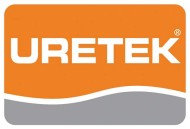 Uretek are active in 53 countries, and are world leaders in geo polymer science applications. We’ve carried out projects for major international airports, including Mumbai International, San Jose, LAX, Oslo, Schiphol, Sydney, Brisbane and Andrews Air Force Base, USA, where we repaired the Air Force One runway. We also work extensively for major manufacturers, including Hyundai in Korea, Honda, and users of warehouse space. In addition, some countries use our technologies to stabilise buildings in earthquake zones.
Uretek are active in 53 countries, and are world leaders in geo polymer science applications. We’ve carried out projects for major international airports, including Mumbai International, San Jose, LAX, Oslo, Schiphol, Sydney, Brisbane and Andrews Air Force Base, USA, where we repaired the Air Force One runway. We also work extensively for major manufacturers, including Hyundai in Korea, Honda, and users of warehouse space. In addition, some countries use our technologies to stabilise buildings in earthquake zones.
WLN – Can you tell us about the industrial projects you’ve carried out here?
In the UK we carried out a pioneering project for Northwest Farmers, involving lifting and levelling a warehouse floor to within 1/2mm of its original level, which was an unparalleled achievement. We’ve worked on industrial floor repairs for such companies as Asda, Boots the Chemist, Lidl, Hotchkiss Ductwork, C. Brewer & Sons, Eastbourne, Polypipe, and ASD Metal Services, Belfast.
WLN – Where is Uretek’s global base?
The Uretek parent company is based in Tampere, Finland. We have several internationally eminent scientists in the group, and are unique as a technology development and transfer organisation.
WLN – Where is your UK base?
Our UK HQ is in Skelmersdale: we also have a Southern depot and regional sales office, and a Belfast sales office that handles our work in the Republic of Ireland. We also have contracts pending in the Middle East.
WLN – How do you apply the Uretek technology?
Our highly trained specialists operate from self-contained mobile units with highly specialised equipment. We inject Uretek resin in its liquid state through a hose from a self-contained truck up to about 75 metres away, into small diameter holes drilled through the slab. The material immediately expands to fill any voids, and subsequently expands up to 30 times its original volume in an upward direction to gradually lift the flooring where required, consolidating the ground and hardening to a solid within a few seconds.
WLN – How many operatives and machines do you have available at any time?
Our operation here has eight or nine teams active at any time. Each team comprises a fully self-contained application vehicle and three to five operatives, led by a senior technician.
WLN – In non-technical terms, how do your floor and slab lifting processes solve settlement problems?
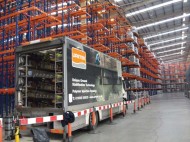 The polymer material expands and densifies the soil to the point required. As it expands, it transfers the thrust to the underside of the soil, with sufficient dynamic resistance to withstand the downward pressure. The Uretek floor and slab lifting process supports, raises and re-levels commercial and industrial concrete floors quickly, economically and with minimal disruption. Commercial and industrial operations can continue while we’re working – we treat one area at a time and work at night, if required.
The polymer material expands and densifies the soil to the point required. As it expands, it transfers the thrust to the underside of the soil, with sufficient dynamic resistance to withstand the downward pressure. The Uretek floor and slab lifting process supports, raises and re-levels commercial and industrial concrete floors quickly, economically and with minimal disruption. Commercial and industrial operations can continue while we’re working – we treat one area at a time and work at night, if required.
The resin we use is powerful and can develop up to 1,000 tonnes of thrust, lifting the floor and adjusting the racking, even fully loaded. Injected four or five metres into the ground, it can lift 10-15,000 tonnes of soil.
Where specific bearing pressures are required we carry out pre and post dynamic probing tests that prove the soils meet the required density.
WLN – How long does this work take?
Typically, it takes our teams 5-7 days to lift 1,000 sq m of floor by 50mm, but this can be speeded up further as the client requires.
WLN – For the uninitiated, how can you spot where settlement has occurred under a warehouse floor?
It’s usually self-evident: differential settlement causes wear and tear to the slab joint and waves in the slab surface, which affect fork lift trucks’ ability to operate.
WLN – How do people “normally” dealt with settlement problems?
People traditionally address floor settlement problems by breaking out the existing slabs and putting down new ones, and filling the voiding with cement-based material. This can take weeks, if not months, it costs a fortune, and the warehouse is probably unusable during this time.
These forms of repair are no longer valid in today’s warehouse sector, with super-flat floors. On top of the cost and interruption, they don’t allow the accurate floor realignment that today’s high-level order picking warehouses require.
WLN – How does a Uretek fill compare in strength and stability to traditional flooring work? How long does it last before deterioration?
Uretek materials increase the floor’s load-bearing capacity by 200-700 percent and have a minimum design life of 60 years, but the underlying polymer science could well last 1,000 years.
WLN – What is the Uretek resin made of?
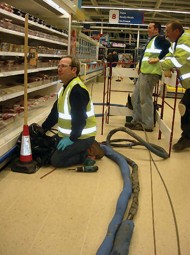 Our resin is an organic polymer, which expert manufacturers around the world produce for us to a patented formula. We have such volume massive requirements for the resin that we carry out R&D hand in hand with our suppliers.
Our resin is an organic polymer, which expert manufacturers around the world produce for us to a patented formula. We have such volume massive requirements for the resin that we carry out R&D hand in hand with our suppliers.
WLN – Does the resin produce any fumes during application that can affect warehouse stocks?
We have carried out carefully analysed research, which shows no environmental discharge.
WLN – Is there any risk of chemicals in the Uretek resin getting into the water table and local environment?
Our materials are fully inert. Pumped in as gel, they foam very quickly with no environmental impact, and are completely meta-stable.
WLN – What environmental approvals do you have?
Our materials are recognised internationally and meet all current environmental standards.
WLN – Is Uretek technology recognised by civil engineers and specifiers working in the industrial sector?
Yes it is, where deemed appropriate: where there is a need to consolidate flooring to level, and where the soil is suitable for treatment. Commercial sector insurers also recognise and approve Uretek technology for use in emergency repairs.
WLN – Do you supply Uretek equipment and resin to civil engineers and contractors, or do you only carry out the work yourselves?
Our technology is carefully controlled and regulated by Uretek staff, to strict quality controls. We don’t supply the polymer or application machinery to anyone else.
WLN – Can you tell us about use of your techniques in preparing floors for Mezzanine floor columns?
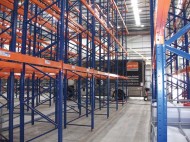 Depending on the size of the floor columns, we can support a mezzanine floor with polymer injections down to the firm horizon of the soil. We pre- and post-test all our jobs to check the ground’s dynamic resistance, using our in-house testing equipment.
Depending on the size of the floor columns, we can support a mezzanine floor with polymer injections down to the firm horizon of the soil. We pre- and post-test all our jobs to check the ground’s dynamic resistance, using our in-house testing equipment.
WLN – Can high level racking be used in floors after they’ve been treated with Uretek?
Yes, it can: one of our great functional benefits is that we can lift, level and stabilise to such great accuracy.
WLN – Are you actively talking to the UK warehouse and logistics operations about using your techniques?
We make regular contact with all the major organisations through our marketing department, led by our Chief of Continued Professional development, Bill Stevens and our Marketing Manager, Cora Bengolea. We also have a full field force of qualified inspectors and experienced property assessors.
WLN – Have you won any awards for your technology?
We’ve won various awards, including a civil engineering historic bridges and infrastructure award for a mediaeval packhorse bridge we helped repair for Lincolnshire County Council.
WLN – Do you publish case studies about your commercial sector work?
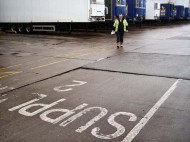 We include a number of case studies in our regular customer newsletters. Some of our projects would make your hair curl: you’d be amazed at the potential liabilities if our technology didn’t work, hence sensitivity prevents us publicising them.
We include a number of case studies in our regular customer newsletters. Some of our projects would make your hair curl: you’d be amazed at the potential liabilities if our technology didn’t work, hence sensitivity prevents us publicising them.
WLN – Are you exhibiting at any industry shows?
We usually exhibit at NCE Civils and a few other specialist shows.
WLN – What factors do you see driving wider industrial use of your solutions?
Our solutions are widely recognised and used, but are currently not deployed to their fullest extent. There’s a lot of potential for further development, especially our Power Pile technology. After 22 years, we’re still finding massive ignorance of what our solutions can achieve.
We’re certainly well known in the UK housing sector, and recently featured in a programme on Channel 4 called ‘Help, My House Is Falling Down!’ We’ve recently started to find a surge of interest in our technology in both government circles and the commercial world, especially for projects where budgets are tight.
WLN – Finally, where do you see Uretek going from here?
In the commercial sector we’re expecting to see accelerated use of all our techniques to reduce the cost of floor repairs, and benefit from their unparalleled accuracy, speed and ease of application, and the fact you can continue to trade while the repair is being done.
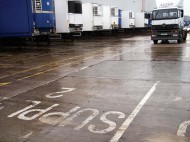 Uretek UK has survived the recent recession remarkably untouched: I’ve never seen such a high level of demand and interest as we have now, and I’m highly optimistic that it will continue.
Uretek UK has survived the recent recession remarkably untouched: I’ve never seen such a high level of demand and interest as we have now, and I’m highly optimistic that it will continue.
Uretek UK Ltd
Tel: 01695 50525




Comments are closed.